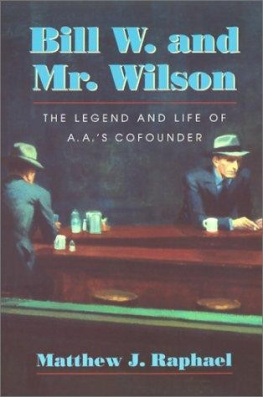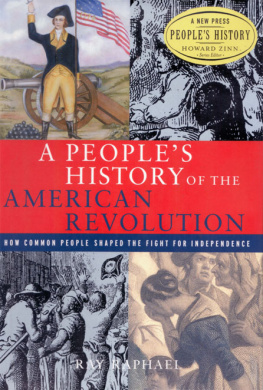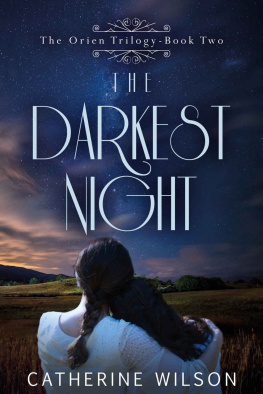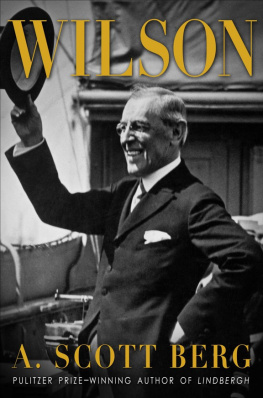Table of Contents
Bill W. and Mr. Wilson
The Legend and Life of A.A.'S Cofounder
Matthew J. Raphael
Copyright 2000 by University of Massachusetts Press
All rights reserved Printed in the United States of America
LC 99-086304
ISBN 1-55849-245-3
Designed by Dennis Anderson
Set in Adobe Dante by Graphic Composition, Inc.
Printed and bound by Thomson-Shore, Inc.
Library of Congress Cataloging-in-Publication Data
Raphael, Matthew J.
Bill W. and Mr. Wilson: the legend and life of A.A.'s cofounder / Matthew J. Raphael.
p. cm.
Includes bibliographical references.
ISBN 1-55849-245-3 (alk. paper)
1. W., Bill. 2. Alcoholics, Biography. 3. Alcoholics Anonymous. I. Title.
HV5032.W19 R36 2000
362.292'86'092dc21
[B] 99-086304 British Library Cataloguing in Publication data are available Excerpts from various materials published by Alcoholics Anonymous World Services, Inc. (A.A.W.S.) are reprinted with permission of A.A.W.S. Permission to reprint the material does not mean that A.A. has reviewed or approved the contents hereof or that A.A. necessarily agrees with the views expressed herein. A.A. is a program of recovery from alcoholism only; use of A.A. materials in connection with non-A.A. programs and activities, or their use in any other non-A.A. context, does not imply otherwise.
For my sons
As a matter of personal preference, I'd rather there never would be any biography, because A.A. has been such a benign conspiracy of God and so many other people, that I should certainly be over-rated.
Bill W. to Max W., 25 September 1961 
And again, and again, in secret communion with my own spirit, would I demand the questions, "Who is he? whence came he? and what are his objects?"
Edgar Allan Poe, "William Wilson"
Preface
It is an intriguing coincidence that William (Griffith) Wilson bore the same name as the title character of a well-known tale by Edgar Allan Poe, whose notoriety as a hopeless drunkard in the nineteenth century compares to Bill W.'s celebrity as a recovered alcoholic in the twentieth.
In "William Wilson," Poe explores the idea of the Doppelgnger, the shadowy double, who haunts the story's dissolute and frequently inebriated narrator with his unaccountable and progressively insufferable materializations to the point where the nameless narrator is maddened to murder what turns out to be an imago of his own conscientiously sober self. Poe's William Wilson is, in fact, an uncanny prototype of "Bill W."!
The idea of doubleness also governs my treatment of the other William Wilson, the fusion of whose personal identity with A.A. history has tended to obscure whoever may have lived behind the legendary persona.
Although Bill W. and Mr. Wilson is by no means a comprehensive biography of its elusive subject, it does represent a type of life writing that is epitomized by A. J. A. Symons's classic The Quest for Corvo (1934), the progenitor of the "quest biography" genre in which the life of the biographical subject is linked to the vicissitudes of the biographer.
Bill W. and Mr. Wilson is a book of personal impressions and ruminations, for which no one else is ultimately accountable. Although I am very grateful for the cooperation of archivists at A.A.'s New York Headquarters and at Stepping Stones respectively, Judith Santon and Eileen Guilianithis book does not in any way speak for them or for Alcoholics Anonymous.
I am indebted as well to previous work on Bill Wilson and especially to the three excellent studies from which I have drawn the most: Robert Thomsen's Bill W., Ernest Kurtz's Not-God, and the anonymous A.A. biography ' Pass It On .'
For reasons that I think will become apparent, I have chosen not to break my own A.A. anonymity. "Matthew J. Raphael" is a pseudonym.
Abbreviations
AA Alcoholics Anonymous: The Story of How Many Thousands of Men and Women Have Recovered from Alcoholism . 3d ed. New York: Alcoholics Anonymous World Services, 1976. (I am using the third rather than the 1939 first edition of Alcoholics Anonymous for the convenience of the reader; although the text of the first part is virtually identical in both editions, they have different pagination.)
AACA Alcoholics Anonymous Comes of Age: A Brief History of A.A. New York: Alcoholics Anonymous Publishing, 1957. BW Robert Thomsen. Bill W. New York: Harper and Row, 1975.
DB Dr. Bob and the Good Oldtimers: A Biography, With Recollections of Early A.A. in the Midwest . New York: Alcoholics Anonymous World Services, 1980.
LH The Language of the Heart: Bill W.'s Grapevine Writings . New York: AA Grapevine, 1988.
LR Lois Remembers: Memoirs of the Co-Founder of Al-Anon and Wife of the Co-Founder of Alcoholics Anonymous . New York: Al-Anon Family Group Headquarters, 1979.
PIO -' Pass It On': The Story of Bill Wilson and How the A.A. Message Reached the World . New York: Alcoholics Anonymous World Services, 1984.
VRE William James. The Varieties of Religious Experience: A Study in Human Nature . Edited by Martin E. Marty. New York: Penguin Books, 1982. (This is a facsimile reprint of the first edition of 1902.)
Founders Day 1998
It takes ten minutes for the bikers all to pass. This, I am told, is the customary windup to Founders Day, the annual birthday party for Alcoholics Anonymous, born here in Akron, Ohio, in the spring of 1935. A procession of motorcycles, with hundreds of sober riders astride, roars out to Mount Peace Cemetery, the burial site of Robert Holbrook Smith, M.D., cofounder of A.A. One biker has brought along bagpipes to drone at the graveside ceremony. Throughout this June weekends activities many alcoholics, less conspicuously than the bikers, have sought out Dr. Bobs headstone. As a sign of their gratitude, some leave behind their chips, the brass medallions given by A.A. groups to mark sobriety anniversaries.
I am not going to the cemetery this year, my thirteenth of sobriety and my first at Founders Day. But I make a point of rising early enough to catch the parade, which is supposed to begin (but does not) at 7:30 sharp. I am standing near the head of the lengthening motorcade, at the corner of South College and East Main Streets, on the campus perimeter of the University of Akron, host to the festivities. It is a cloudy Sunday morning with sprays of rain, and spectators are sparse. The bikers, their engines now at rest, are visiting among themselves. A few are sensibly dressed in plastic rain gear. Most are not; a scowl is their umbrella. The leaders, I realize, must have been chilling here for hours in order to hold the coveted vanguard they have seized.
These point men (a few women follow close behind) all belong either to the Fifth Chapter or to the Messengers, national A.A. biker groups. One of them, the coolest dude I have seen, hails from my own environs in upstate New York. A muscular man of average height, thirty-something, with a handlebar mustache and shoulder-length dark hair capped by a knotted red bandanna, he is decked out in blue and black. A sleeveless denim vest, with The Fifth Chapter emblazoned on the back, covers a black leather jacket. Black leather chaps cover faded jeans. The contrasting colors and textures emphasize the cut of the chaps, how they cradle his virilia, leaving him suggestively exposed. So far this attire is nothing extraordinary: merely mainstream biker wear. But my upstate neighbor has gone the extra mile sartorially. He also sports a silver nose stud, linked by a chain to another stud in his left ear, from which depends a small silver cross. The chain is perfectly draped to follow the curve of his chiseled cheekbone. On his left boot only he wears a silver spur, with the rowel removed. In his right hand he fingers a petit corona, which he may well have been saving to smoke on just this occasion. The dude, like most of the bikers, affects a tough obliviousness to the spectators. But down the line one brother, who obligingly poses for a snapshot, asks the sidewalk photographer, Do you want mean looking or nice? The offer of this choice reassures me that the cyclists compose not some pack of road ragers hell-bent for leather, but rather a benignly wild bunch of recovering alcoholics who celebrate the fellowship we all believe is keeping us sober, if not always nice.















